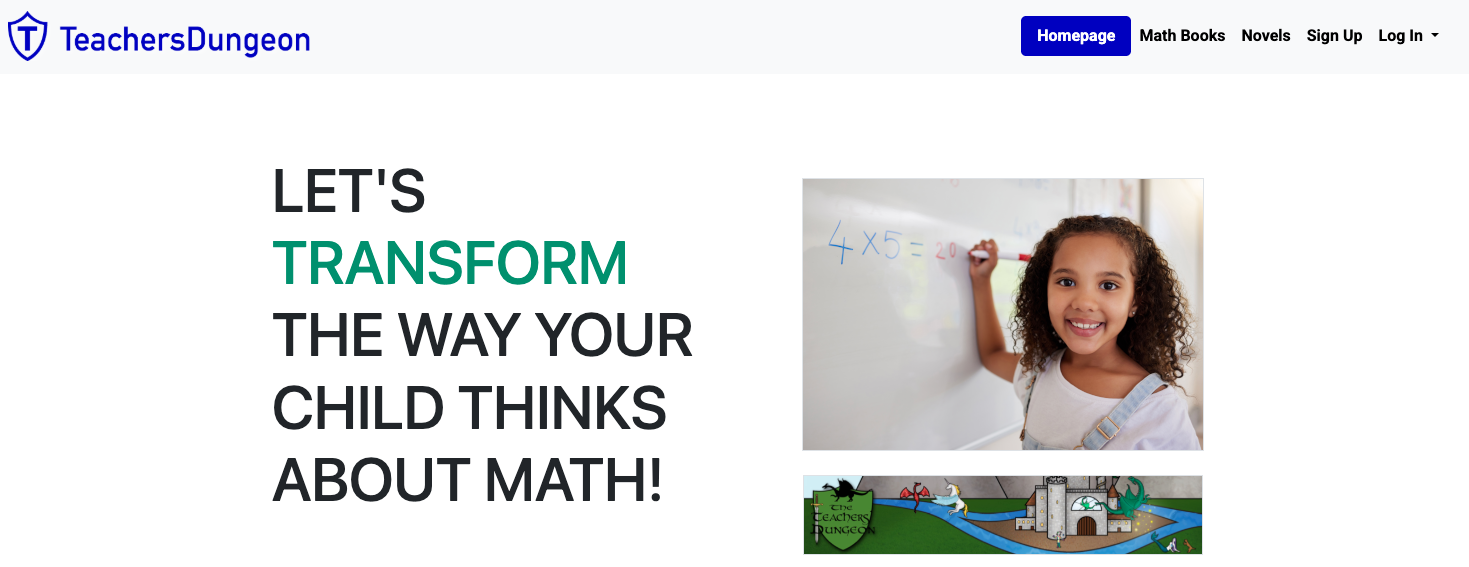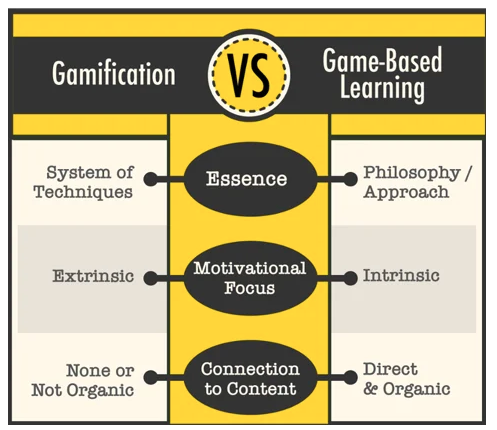The Education Revolution ✏️
Top 10 Reasons Why Game-Based Education Helps Kids Learn Math
1. Makes Learning Fun
Games turn math from a “have-to” into a “want-to.” When kids are having fun, they’re more motivated to stick with a task, try new strategies, and push through challenges — which leads to deeper learning!
2. Increases Engagement & Focus
Traditional worksheets can lead to boredom or zoning out. But math games demand attention, interaction, and quick thinking. Kids stay in the zone longer — and retain more because of it.
3. Immediate Feedback = Faster Growth ⚡
In a math game, kids find out right away if their answer is right or wrong — and often get hints or try again immediately. This real-time feedback helps them learn from mistakes and grow faster than delayed grading.
4. Builds Confidence Through Safe Practice
Games offer a low-stakes environment where kids can make mistakes without fear. That freedom helps build math confidence, especially for struggling learners who might shut down in traditional settings.
5. Supports Individualized Learning Paths
Many math games (like The Teacher’s Dungeon) are adaptive — letting kids work at their own level and pace. That means high-flyers stay challenged and learners who need more time aren’t left behind.
6. Promotes Strategic & Critical Thinking
Games encourage kids to think critically, plan ahead, and choose the best solution — not just memorize steps. This helps build problem-solving skills that apply beyond math class.
7. Reinforces Core Math Skills
Through repetition and progression, kids practice foundational math (like multiplication, fractions, or place value) in ways that feel like fun, not drill. The result: automaticity with key skills.
8. Encourages Perseverance & Grit
Games challenge kids with increasing levels of difficulty. They learn to try again, adjust their strategy, and not give up when it gets hard — building resilience in learning.
9. Links Math to Real-World Scenarios
Story-based games place math in fun, relatable adventures — like escaping from traps, earning gold, or unlocking new levels. This shows kids why math matters in the real world.
10. Boosts Collaboration & Social Skills
Multiplayer or classroom math games promote teamwork, respectful competition, and discussion. Kids learn how to communicate ideas and support one another — even while solving equations!
Final Thought:
Game-based learning isn’t just a trend — it’s a research-backed method that helps elementary students love math, build lasting skills, and develop a growth mindset.
If you’re a parent or teacher looking for a proven way to boost math success, check out our blog:
The Best Online Math Help on Earth for 3rd–6th Graders
Or jump right into the action with our interactive math adventure:
www.TeachersDungeon.com

Game-Based Education vs. Gamification: Why Game-Based Education Wins
In today’s digital era, educators and parents are bombarded with new learning methods promising better engagement and retention for students. Two of the most commonly confused concepts in educational technology are game-based education and gamification. While both incorporate game elements, they serve different purposes. But which one is better for truly helping students grasp mathematical concepts? Let’s dive deep and uncover why game-based education is the superior choice, especially when combined with traditional pencil-and-paper learning. ✨
Game-Based Education vs. Gamification: What’s the Difference?
https://www.youtube.com/watch?v=LKGMVq8C-mU
The Problem: A Growing Dependence on Gamification
Many educational apps and classroom strategies rely heavily on gamification to make learning fun. Gamification includes adding badges, leaderboards, points, and other game-like incentives to encourage students to participate in learning activities. While this can motivate students in the short term, it does not necessarily translate to deep understanding.
Lack of True Engagement: Many students participate in lessons just to earn rewards, rather than truly absorbing the material.
Shallow Learning: Clicking buttons or earning points does not guarantee comprehension.
Short-Term Motivation: Once the rewards are removed, students may lose interest in the subject.
This leads to a crucial question: How do we ensure that learning is both engaging and effective in the long run? The answer lies in game-based education.
Activate: Understanding Game-Based Education
Unlike gamification, game-based education involves full immersion in a structured, educational game where students must apply knowledge and skills to progress. This is what makes platforms like The Teacher’s Dungeon so powerful.
Here’s how game-based education differs:
✅ It Encourages Problem-Solving: Students don’t just memorize facts; they must apply their knowledge to move forward.
✅ It Provides Instant Feedback: Interactive platforms allow students to learn from mistakes and adjust their strategies in real-time.
✅ It Engages Students in a Narrative: A well-designed game places students in a compelling storyline, making math feel like an adventure rather than a chore.
Take, for instance, a student working on fractions in The Teacher’s Dungeon. Instead of just answering multiple-choice questions, they navigate a fantasy world, solving fraction-based challenges to defeat mythical creatures. This approach taps into deep learning strategies while keeping students motivated.
The Solution: Merging Game-Based Learning with Pencil-and-Paper Practice
One of the most effective ways to solidify learning is by blending game-based education with traditional pencil-and-paper practice.
✏️ When students physically write out math problems, they develop deeper connections with numbers and operations. Studies show that handwriting reinforces memory and improves retention. When students apply what they learn in an interactive game, they see the concepts come to life, making learning feel relevant and exciting.
Here’s why this combination is a game-changer:
Stronger Neural Connections: Physically writing down math problems activates different areas of the brain, reinforcing learning.
Bridging Digital & Real-World Learning: Games make math fun, while writing builds essential academic skills.
Encouraging Critical Thinking: A student who writes out a math solution and then tests it in an interactive game learns through multiple modes of engagement.
For example, imagine a student learning long division. They solve the problem step by step on paper and then input their answer into a game-based platform. If incorrect, the game provides hints or a mini-lesson, guiding them toward mastery.
Want to supercharge your math intervention program? Discover how Game-Based Education can make all the difference! In this video, I’ll show you how to leverage interactive learning to boost your students’ math skills and keep them engaged. ✨
https://www.youtube.com/watch?v=-2ANuawdOE0
Case Study: From Struggling to Soaring in Math
Meet Samantha, a 5th grader who struggled with multiplication and fractions. Her parents tried traditional worksheets and flashcards, but nothing seemed to stick. When they introduced her to The Teacher’s Dungeon, something clicked.
Step 1: Immersion in Game-Based Learning – Samantha began playing through levels that required her to apply multiplication and fractions in real-time challenges.
Step 2: Reinforcement with Pencil and Paper – Her parents encouraged her to write down problems before entering answers into the game.
Step 3: Mastery Through Repetition & Fun – The combination of game-based immersion and written practice transformed her approach to math.
After just two months, Samantha went from dreading math to scoring in the top percentile of her class. Her confidence skyrocketed, and math became her favorite subject.
Take Action: The Best of Both Worlds
As parents and educators, we want our students to truly understand math, not just play games. That’s why game-based education, when combined with pencil-and-paper learning, is the ultimate formula for success.
Step into the world of The Teacher’s Dungeon! Your child will gain access to engaging, standards-based math challenges while reinforcing skills through traditional methods.
Give your child the best chance at success. Help them see, interact, and master math like never before!
Get started today! Visit www.teachersdungeon.com and unlock a whole new way of learning!
Have you tried game-based education with your child? Share your experiences in the comments below! Let’s spark a conversation about the future of learning! ✨

I love that this post talks about the teacher’s dungeon. It is incredible how I learned so many subjects super quickly when I used to take days or even weeks to understand some subjects. Teacher’s Dungeon helps you improve on math so much. I used to not be the best at math, but now I’m an A+ student! In the games, you get crystals when you answer a question right, and if you get it wrong you get a step-by-step video to teach you how to do the problem. If you have enough crystals, you can spend them on anything you want! From saving animals taken away by the dragon to upgrading your castle to upgrading your person’s job! I love Teacher’s Dungeon. it is amazing for struggling students and even great for practicing. I 100% recommend!